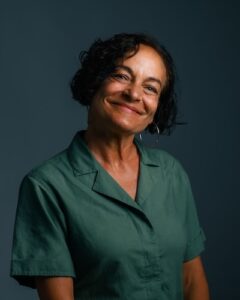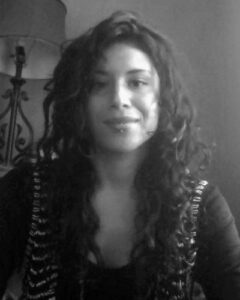For the last few years, Arts Corps has brought arts education into the Patricia H. Clark Children and Family Justice Center to engage the students at Alder Academy, located inside. Alder is one of five sites that Arts Corps serves in our collaboration with Interagency, a network of alternative high schools that are part of the Seattle Public Schools District and that supports students who have not found success at traditional schools due to a wide range of factors related to systemic oppression. The students at interagency are farthest from educational justice, and at Alder our youth are facing the justice system. Arts Corps classes help provide these students with safe, consistent space for creative expression, social-emotional development, and arts-based strategies for engagement in school.
Through our time at Alder, we see the meaningful and transformative impact that arts have on these students’ lives. We wanted this impact to go even further and to reach more of the youth who need art as a right to healing and self-expression. So we decided that our classes within the Patricia H. Clark Children and Family Justice Center needed to serve not just Interagency students, but incarcerated youth as well. After months of working with the Department of Adults and Juvenile Detention, we are now starting a new program to bring visual arts, movement, and spoken word to youth in detention.
Two of the programs’ teaching artists, Heather Harris and Maria Guillen Valdovinos, shared with us a little more about this new initiative.
What is each of you teaching in this new program?
H: I am excited to begin teaching the art of movement at the youth detention center.
M: I will be teaching visual arts, graphic design, illustration and collective muralism.
What is the importance of having art within spaces like the Youth Detention Center and of offering these different mediums?
H: The dance class will give the participants an opportunity to create movement, share stories and expression, as well as working on strength building, stretching and learning a variety of lyrical and jazz-based dance steps.
M: As a creative abolitionist I believe the arts, movement and expression should be accessible to everyone, especially youth incarcerated. There are so many ways to process lived experiences and at any stage in life anyone can be an artist. The arts ignite creative thought process, challenge dominant narratives, how we communicate and help us build collective ideas. These spaces are needed for youth to express themselves and be able to develop creative skills with community teaching artists.
What are some challenges of the program? What are some areas of opportunities?
H: Some of the challenges have been just getting clearance of paperwork before entering the facility, but we are making our way through the process and will be starting soon.
M: Some of the challenges are materials & tools becoming a liability, which is also a great opportunity to learn about different mediums & methods. Developing skills with technology and learning the process of both hand-drawn & digital drawing is something I always appreciate teaching youth. There are so many ways to be a creative person, and I think it is great as an arts community we can provide these resources to people experiencing incarceration.
You were approached for the program due to your experience as teaching artists. What is one lesson you’ve learned through time that you are bringing into the program?
M: Over the years I’ve learned as an artist & educator invested in community to be flexible and respect others autonomy.
What is the role of art in social justice and in conversations of social issues such as youth incarceration?
H: I believe that Art is a wonderful tool to release emotions, tap into creativity and to meet each person exactly where they are at in their journey.
M: The arts are inherently political and necessary for social revolutions; helping us shift our knowledge and find new ways to exist. Youth who experience incarceration deserve to be treated with dignity and have access to arts education. The arts create opportunities for understanding, knowledge, solidarity, and plays a vital role in shaping all aspects of societies.


